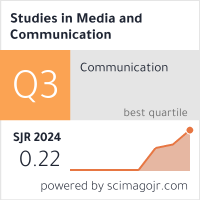Investigating the Elements of Short Commercial Mineral Water Advertisement: A Case on Discourse Analysis
Abstract
This study aimed to analyze the discourse in commercial mineral water advertisements, focusing on linguistic structures, communication strategies, and persuasive techniques. This research explores how advertisements use language and visual elements to attract consumer attention and persuade them to purchase a product. Advertising is a crucial marketing tool that shapes consumer perception through discourse. Commercial advertisements, including bottled mineral water advertisements, strategically use linguistic and visual features to enhance persuasion. This study examined a well-known Indonesian bottled mineral water advertisement to understand its discourse structure, language use, and persuasive strategies. This study adopted a qualitative descriptive approach using a discourse analysis method. Data were collected from television, YouTube, and TikTok advertisements focusing on transcripts and visual elements. This study applies Bolen’s (1984) discourse structure model, Chomsky’s (1957) linguistic theory, and Aristotle’s persuasion principles (ethos, pathos, and logos) to analyze advertising strategies. The findings revealed that the advertisement consists of three key sections: title, body, and closing. The title attracts attention with an emotional appeal, the body highlights product benefits, and the closing reinforces the brand message using a soft-selling approach. The advertisement employs casual and persuasive language using repetition, contractions, and emotional words. The primary persuasive technique relies on logos, emphasizing the product’s health benefits while also incorporating pathos to evoke emotions. This study concludes that effective advertisements combine structured discourse, persuasive language, and visual elements to shape consumer behavior. These findings suggest that discourse analysis is a valuable tool for understanding advertising strategies. Future research could compare different brands and examine the psychological effects of advertising discourses on consumers.
Full Text:
PDFDOI: https://doi.org/10.11114/smc.v13i4.7813
Refbacks
- There are currently no refbacks.
Studies in Media and Communication ISSN 2325-8071 (Print) ISSN 2325-808X (Online)
Copyright © Redfame Publishing Inc.
To make sure that you can receive messages from us, please add the 'redfame.com' domain to your e-mail 'safe list'. If you do not receive e-mail in your 'inbox', check your 'bulk mail' or 'junk mail' folders.
If you have any questions, please contact: smc@redfame.com
------------------------------------------------------------------------------------------------------------------------------------------------------

